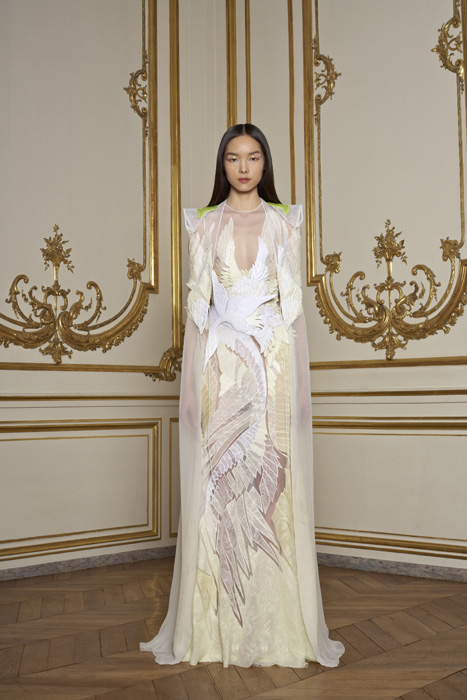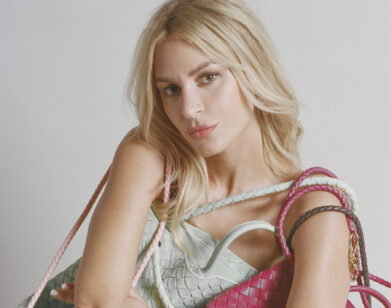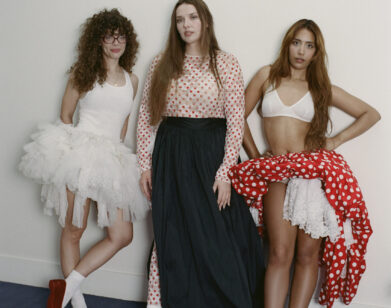Turning Japanese: Givenchy Couture

Walking through the empty rooms of the Hotel d’Evreux on Paris’s Place Vendôme is a luxurious experience in itself. Here, Riccardo Tisci has found an elegant way to return to the time when haute couture was a very personal affair. Over three days, appointments are made for small groups to have a close-up view of the 10-piece collection. Occasionally a model sails by dressed in one of his featherweight pieces, while a house representative fills you in on how many hours (2000–4000) the beading and construction required.
After last season’s skeletal second skins, Tisci turned to the Butoh dance performance of Kazuo Ohno, which he mixed with the bold, futuristic design of Japanese robot toys. From Ohno came the dried-flower palette of off-white and yellow, while the deep pink leather trim which built up vest-like jackets, and the orange glass tube beads forming a reptilian “spine” down the backs of slinky gowns, looked like cartoon samurai. On the dreamier side were cranes curling around the hips of second-skin dresses, their tulle skirts patched in transparent yellow stained-glass tulle, or airily appliquéd in swirling, patterned lace.
Tisci has a resolutely young spirit and dressing for him, couture or otherwise, is about the body. His design is light and transparent. But he’s irreverent about the materials. And so several shades of off-white sequins were washed to lose their shine for a swirling-pattern beaded dress designed to look like leather from a distance. And bias jackets were made from thin stitched strips of bone-colored leather, which were patched together in arabesque patterns. Zippers, a decidedly foreign element to couture, showed up with winged pulls around the waist, their teeth turned up to edge the neck and armholes on one transparent tulle bodice. And just for the fun of it, Tisci constructed shoulder pads out of clear plastic for one jacket. This was as much for the transparency he loves as it was a way of showing that couture is everywhere.






